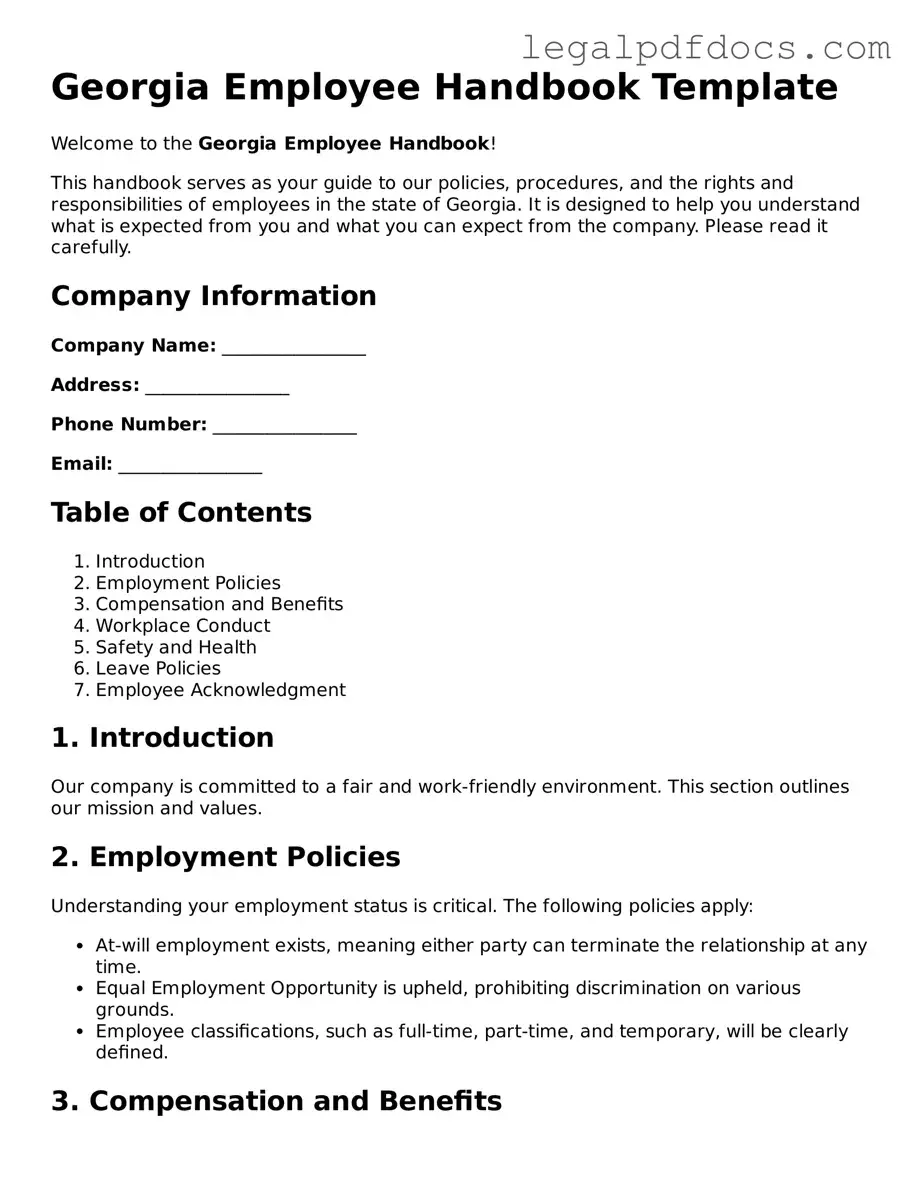Creating a comprehensive employee handbook is essential for any organization in Georgia. This document serves as a vital resource for both employers and employees, outlining the rights, responsibilities, and expectations within the workplace. Key aspects of the Georgia Employee Handbook include company policies on attendance, dress code, and workplace behavior. It also addresses important topics such as anti-discrimination policies, harassment prevention, and safety regulations. Furthermore, the handbook provides information on employee benefits, including health insurance, vacation time, and sick leave. By clearly communicating these elements, the handbook fosters a positive work environment and helps prevent misunderstandings. It is crucial for employers to keep the handbook updated to reflect changes in laws and company policies, ensuring that all employees have access to the most current information. In doing so, organizations not only protect themselves legally but also demonstrate their commitment to a respectful and fair workplace.
